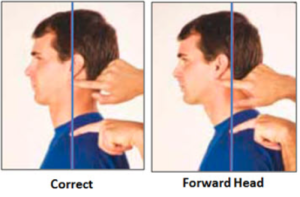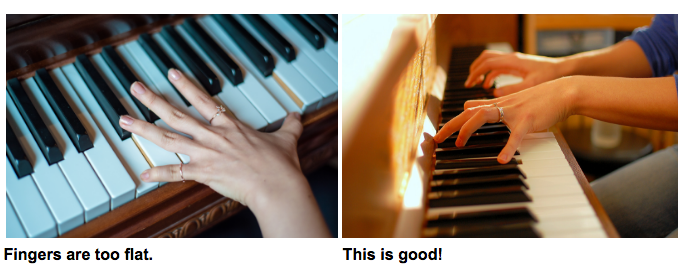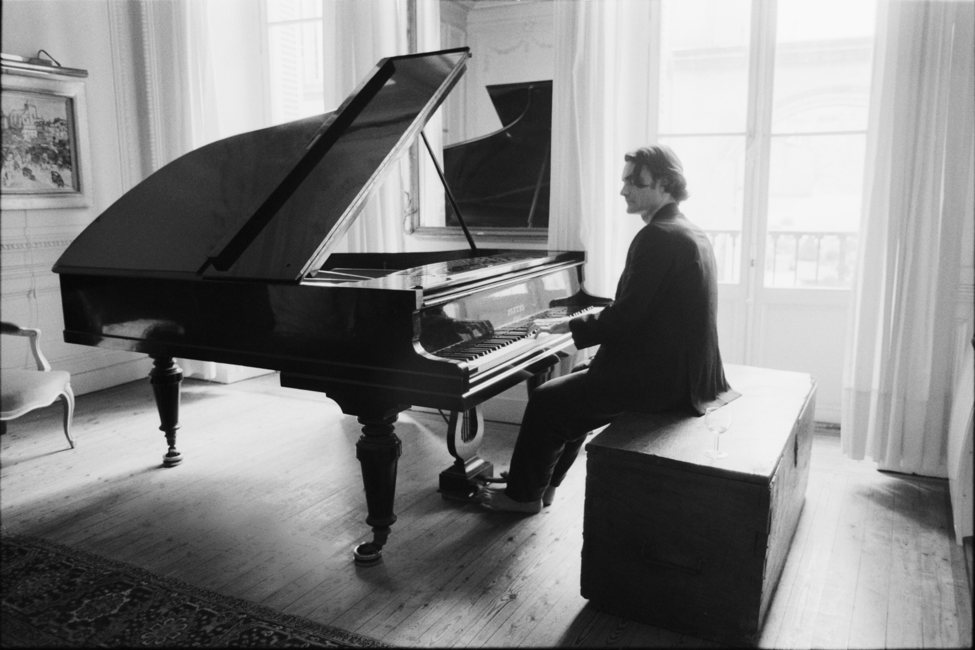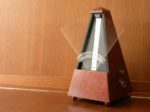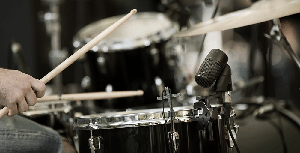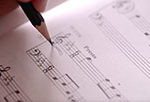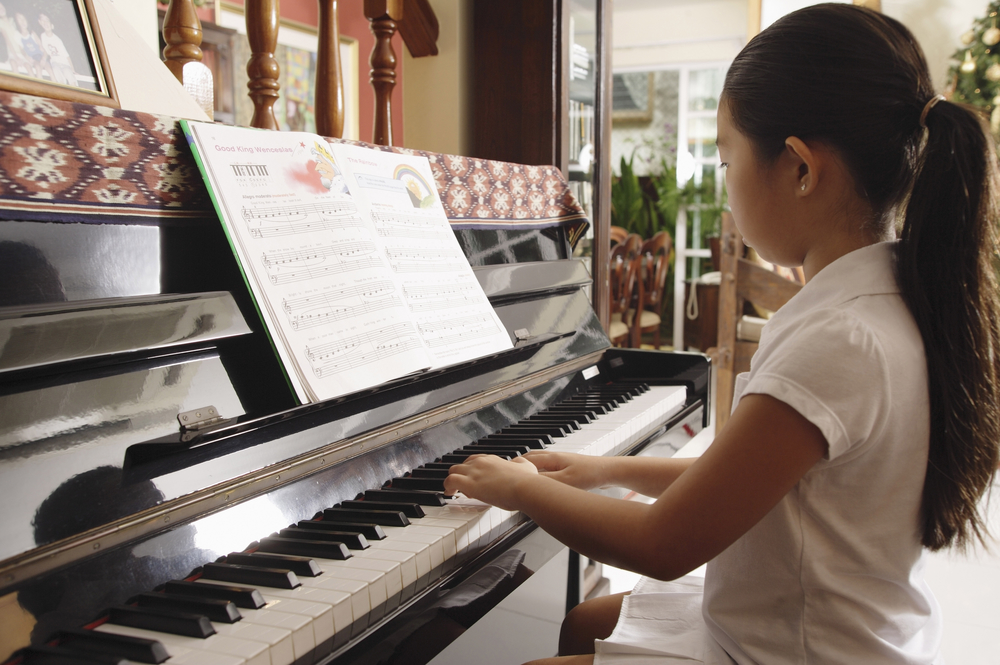
While there is less literature about good posture for piano players than that for drummers or guitarists, it is just as vital that every pianist maintains a good posture. Having a good posture enables the player to comfortably practice or perform longer, without experiencing aches or causing injuries. A player with good posture can play in a relaxed manner, which grants greater control and hence, a greater quality of sound produced.
In this article, we share 9 essential tips on how to improve your posture at the piano.
Tip 1: Keep your neck aligned with your back (avoid forward neck!)
What does this mean?
Your neck should be kept in line with your spine, with your ears above your shoulders (like the diagram on the left). As you read the score, you should maintain this position, instead of slouching forward, jutting your chin out, and forcing your head forward, even if this feels more natural to you. To look at different parts of the score, move your eyes instead of your neck.
Why is this important?
An aligned neck is the foundation of good posture. Likewise, a forward neck is the precursor to a myriad of other problems. The more forward your head is, the more weight your neck has to support. This causes a great deal of strain in your neck and shoulders, while your upper back will round to compensate for the added weight. More aches and pain follow and you might even end up looking like the Hunchback of Notre Dame.
What can I do?
To identify if you have a forward neck, you can do this simple exercise. Stand with your lower back and the back of your feet touching a wall. If the back your head does not touch the wall, it’s likely that you have forward neck.
To correct your posture, adjust your head so that the back of your head touches the wall. Be sure to lengthen your spine instead of simply tilting your head backwards. You may have to squeeze your shoulder blades together. Now, keep this position for a minute. Gradually increase the time in which you stay at this position. Remember this position and be sure to adopt it as you play the piano.
Tip 2: Keep your shoulders down
What does this mean?
Your shoulders should be kept relaxed. They should be placed at a natural position, not raised or rounded.
Why is this important?
If you raise your shoulders, you won’t be able to channel the weight of your arms and body onto the piano keys as you play. You need to be able to control how much of your body weight you exert onto the piano if you want access the full range of dynamics and articulations needed to play pieces. To do this, your shoulders must be kept low and untensed.
What can I do?
First, ensure that your piano bench is of the right height. Your elbows should be around the same level as the keyboard.
Next, check if your shoulders get tense only when you play the piano, or if it’s a problem that extends to your everyday life. If you’re only tense at the piano and you have a generally good posture otherwise, you might be too anxious. Instead of devoting all your attention to how well you’re playing, try to focus on keeping your shoulders in a comfortable position, below your ears.
Tip 3: Maintain a neutral spine
What does this mean?
While your back does not (and should not) be ramrod straight, the natural curvature of your spine should be maintained. This means that you should be sitting upright and not slouching!
Why is this important?
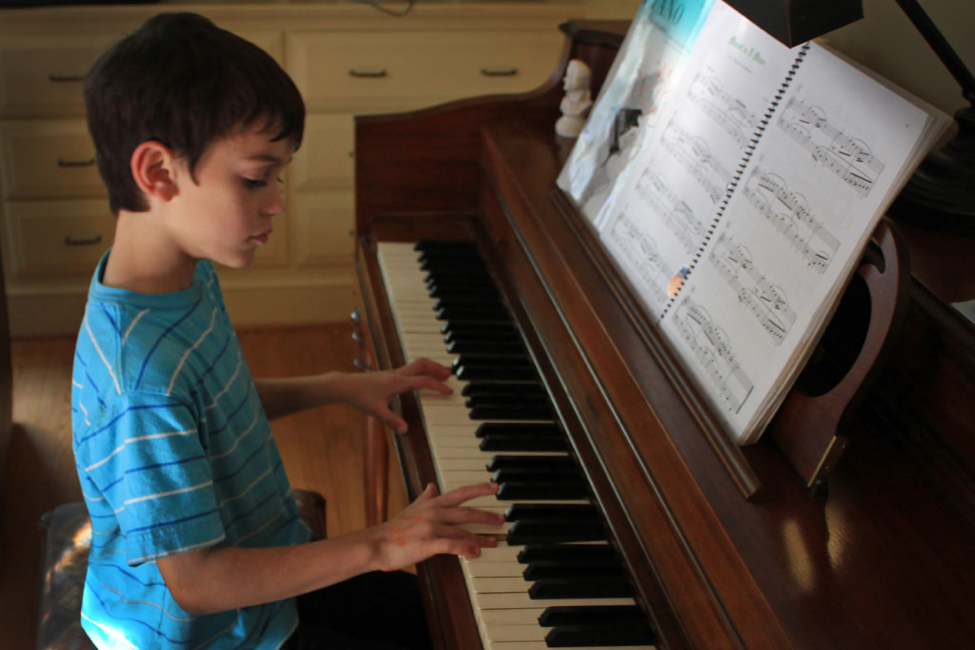
Look at the young boy above. Doesn’t he look authoritative, despite his age? A straight torso is a lot more aesthetically appealing than a hunched one, giving you a more dignified appearance as you play. It also reduces the stress placed upon your back and reduces the likelihood of spinal injuries. It makes you feel more energetic as well.
What can I do?
Well, it should be easy enough to tell if you’re slouching or not. If you’re really unsure, you could get someone to take a picture of your side profile and compare your posture to examples of healthy sitting postures online.
To correct your posture, think of extending your spine. Imagine that you’re a puppet with a string attached to your head. Gently lift the imaginary string to straighten your spine. Try to consciously maintain this position, even when you’re not playing the piano.
To make this position feel more natural, consider strengthening your back with some simple exercises.
Tip 4: Place your elbows at a comfortable distance away from your body
What does this mean?
Your elbows should be positioned at around the keyboard level, such that your forearms are almost parallel to the ground. Your elbows should not be touching your ribcage and neither should they be flared outwards like a bird flapping its wings.
Why is this important?
If your elbows are oddly rotated, your shoulders will be under greater strain. Your range of movements will be limited as well.
What can I do?
As you place your hands on the keyboard, imagine that your forearms are resting on armrests. As you play a wider range of notes, imagine that the armchair gets wider as well. Your shoulders should remain at ease at all times.
Tip 5: Keep your wrists flexible
What does this mean?
Your wrists should go down as you exert force on the keys and up as you prepare to press the next key. To get this right, your wrists need to be kept above the keyboard level. Avoid locking your wrists in place, leaving your fingers to do all the work.
Why is this important?
Your wrist movement helps you transfer force to the keys. This aids with varying dynamics and achieving a richer, fuller sound.
What can I do?
Check if your wrists are placed above the keyboard level before you play. If you have problems with keeping your wrists up, get a friend to check your wrists as you play. Be as natural as possible, let the force of gravity assist you- think of your hands falling into each key.
Tip 6: Keep your fingers firmly arched (no pizza fingers!)
What does this mean?
Your fingers should always be bent, except for your thumb, which should be straight but loose. Keep the curvature of your fingers and avoid having your fingertips buckle as you press each key.
Why is this important?
Your fingers are comprised of several small joints. Keeping your fingers arched helps absorb the impact as you strike each key, protecting your joints. It keeps your fingers agile as well, helping you navigate tricky passages.
What can I do?
To get the ideal curvature of your fingers, place your two hands together, as if you were cupping a chick. Rotate your hands, place them back onto the keyboard, and you’ll have your ideal finger positioning.
Tip 7: Ensure that your knees are at the right distance from the keyboard
What does this mean?
Your knees should be at a position where you can comfortably reach both the keyboard and pedals. While the “right” distance varies based on each player’s build, having your knees slightly under the keyboard works (see picture above) for most people.
Why is this important?
If your knees are at the right distance from the keyboard, it means that the rest of your body is also at a comfortable distance and you have good control over the pedals. If your knees are too far from the keyboard, it often means that shoulders are too far as well causing tension in your arms and limiting your range of movement, as you attempt to correct for the poor positioning.
On the other hand, if your knees are too close to the pedals, your legs will be bent inwards, such that stepping on the pedals while keeping a firm footing on the ground becomes challenging.
What can I do?
If playing remains uncomfortable even if your knees are slightly under the keyboard, check the height of your piano bench. Adjust it until you find a comfortable position that enables you to maintain a good posture based on the other tips. For best results, sit on half- to three-quarters of the piano bench, instead of on the whole bench.
Tip 8: Keep your feet flat on a surface
What does this mean?
Your feet should be kept flat on the floor or an elevated surface (eg. a stool), and not left dangling in the air. If you need to use the pedals, keep your heel grounded on the floor as you step on the pedals with the ball of your foot.
Why is this important?
This ensures stability and balance of your whole body as you play.
What can you do?
Try adjusting the height of the piano bench first. If the keyboard becomes too high after you adjust the bench such that your feet touch the floor, use a footrest. If you need to use the pedals, you can purchase (or make) a pedal extender.
Tip 9: Sit strategically
What does this mean?
Instead of bouncing and sliding around the piano bench, you should simply turn your trunk and stretch your arms while playing passages that are very high or low. If you notice that the piece is dominated by high notes, shift the bench to the right. Likewise, shift the bench to the left for pieces dominated by low notes.
Why is this important?
Bouncing and sliding around the piano bench will make you exert unintentional force onto the keys. To avoid additional strain placed upon your body, try to minimize having to stretch to reach high or low notes by sitting at a strategic location.
What can you do?
Read each piece before practicing. Check if there are a lot of high or low notes that require you to play at the far ends of the piano. If there are, shift your piano bench accordingly.
Coda
Good posture is not only healthy, but also helps you play comfortably with poise and improves your sound by granting access to the full range of motion of your body. Don’t be too alarmed if you find that you’re riddled with bad habits, it’s not too late to start gaining good habits today! When it comes to posture, adopting a good habit often makes it easier to correct your other bad habits.
Bibliography
Cordell, Kristin. 2009. "Piano Performance Injuries and Preventions." Ouachita Baptist University Scholarly Commons. April 15. Accessed September 7, 2017. http://scholarlycommons.obu.edu/cgi/viewcontent.cgi?article=1036&context=honors_theses
Hoffman Academy. 2014. “Top Ten Tips for Good Piano Posture.” April 21. Accessed September 7, 2017. https://www.hoffmanacademy.com/blog/top-ten-tips-for-good-piano-posture/
Lee, Mahea. n.d. “4 Tips for Better Technique and Posture on the Piano.” Accessed September 7, 2017. http://blog.sonicbids.com/4-tips-for-better-technique-and-posture-on-the-piano
Marycliff Piano Lessons. n.d. “Posture when playing piano or keyboard.” Accessed September 7, 2017. http://www.marycliff.co.uk/posture.html
Perry, Marc. 2011. 5 Most Common Posture Problems (and how to fix them).
November 11. Accessed September 7, 2017. https://www.builtlean.com/2011/11/28/posture-problems.
pianocareer.com. 2011. “The 5 Basic Elements of a Correct Piano Posture.” October 1. Accessed September 7, 2017. http://www.pianocareer.com/piano-posture/correct-piano-posture/
Smith, Briallyn. 2015. “Proper Posture for Piano.” January 25. Accessed September 7, 2017. http://www.getsingspiel.com/learn/2015/1/12/proper-posture-for-piano.
Ready to learn music?
Start learning with our 30-day free trial! Try our music courses!
About Liberty Park Music
LPM is an online music school. We teach a variety of instruments and styles, including classical and jazz guitar, piano, drums, and music theory. We offer high-quality music lessons designed by accredited teachers from around the world. Our growing database of over 350 lessons come with many features—self-assessments, live chats, quizzes etc. Learn music with LPM, anytime, anywhere!

